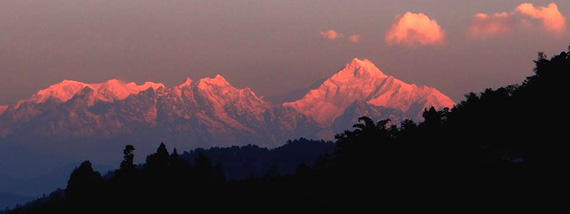
Located at an altitude of 5400 feet above sea level, in a remote corner of the Kalimpong Hills is one of Eastern Himalayas best kept secrets – Jhusing. A fabulous panoramic view of Mt. Kanchenjungha, countless species of birds and only one homestay to accommodate guests makes this village one of the most untouched destinations of the Silk Route Tour.
What to see in Jhusing
If you are fond of visiting destinations which are not a part of the popular tourist itinerary and witness untouched nature in all its beauty, then Jhusing suits your palate. Jhusing does not have motorable road – you would have to hike for 01 km. to reach this village from where your car would stop. We would arrange porters to carry your luggage and guide you to your homestay. Jhusing is located on the fringes of Neora Valley and is the starting point for many trek routes like Mulkarkha Lake Trek and Neora Valley Trek. This village is perched on a hilltop with panoramic views of Mt. Kanchenjungha and the Neaora Valley Forest. A leisurely walk would take you to the nearby Servang Waterfalls. The famous Mulkarkha Lake trek through the village of Tagathang is arranged from Jhusing only. Bird watching, butterfly spotting, nature walk and mesmerising sunrise over Mt. Kanchenjungha are few reasons to visit Jhusing.
Accommodation in Jhusing
Presently, there is only one home stay in Jhusing. The home stay is located just on the edge of the hills and offer the majestic view of Mt. Kanchenjungha. There are 04 rooms out which two rooms have attached western bathrooms and two rooms have non attached bathrooms. Other standard facilities like cozy beds and hot water arrangements are available too. Food is essentially Indian and is served hot and fresh. The ingredients comprise locally grown vegetables, freshly caught fish from the river and local country chicken.
Best time to visit Jhusing
You can visit Jhusing any time of the year. Visiting this hilltop paradise would give you the opportunity to catch a glimpse of the sunrise over the icy peaks of Mt. Kanchenjungha. Its cool climes and resplendent flora during the summer months provide tourists with an ideal refuge to escape the soaring mercury in the plains down below.
